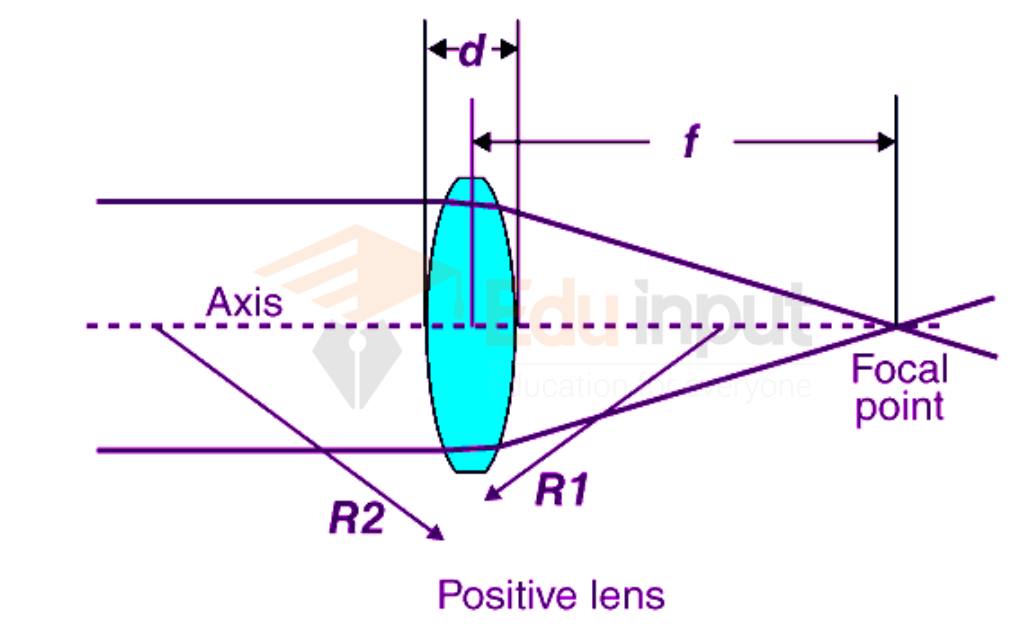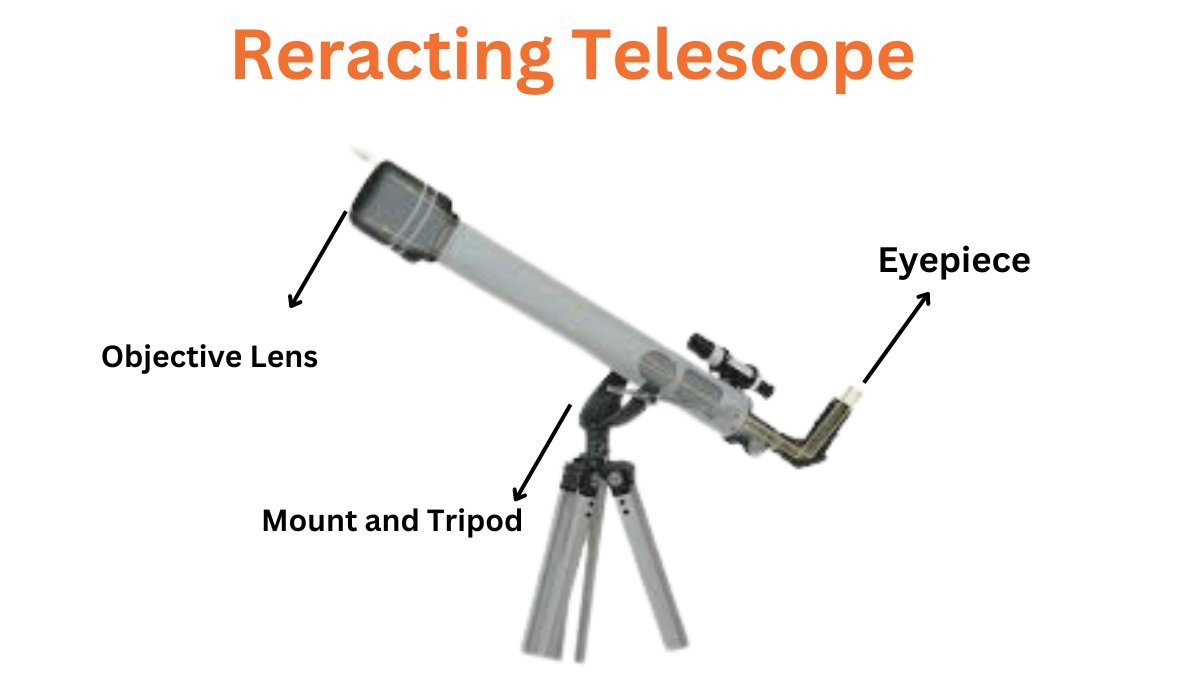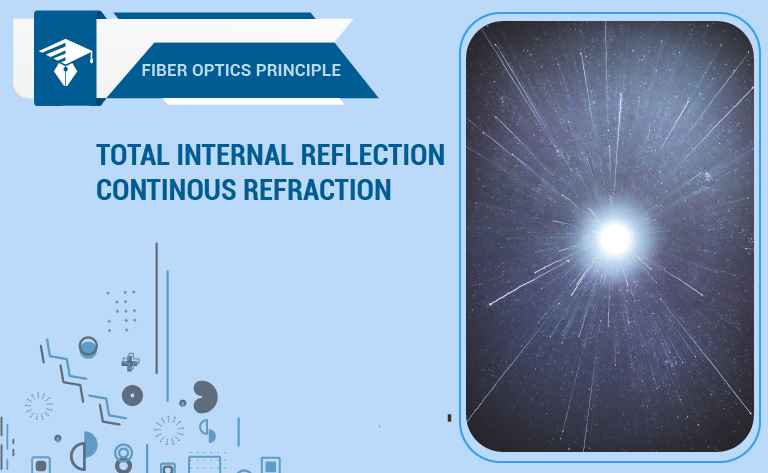Biconvex Lens-Definition, Properties, And Applications
A biconvex lens is a type of lens with two convex (outwardly curved) surfaces that bulge outward in the middle and taper toward the edges. The biconvex lens is a type of simple lens. It is commonly used for controlling and focusing laser beams, producing high-quality images, and serving as a component in various optical instruments.
Biconvex Lens
Biconvex lenses are also called double convex lenses. They are simple lenses with two curved-out surfaces that bulge from the middle. These two surfaces are equally curved and focus parallel rays of light to a single point beyond the lens. Biconvex lenses are used in many imaging devices such as microscopes, cameras, and telescopes.
A biconvex lens is also called a Plano-convex lens. When a straight beam of light passes through the lens, it focuses on a spot behind the lens. This lens is called a converging or positive lens. The distance between the lens and the spot where the light focuses is called the focal length.

There are two focal points and two centers of the lens because there is a curve on both sides. The middle line of the biconvex lens is called the principal axis.
The human eye lens is a biconvex lens that helps us see things. It works by bending light rays so that they focus on the retina. The retina is part of the eye that helps us to see. When we look at objects close to us the lens becomes more curved to bend the light more sharply.
When we look at distant objects the lens is less curved because less refraction is needed. The lens is able to change its shape because it is very flexible. The more curved the lens is, the more it bends light.
Properties of a Biconvex
Biconvex lenses possess several properties that make them useful in various optical applications. Some of the key properties of biconvex lenses include:
Biconvex lenses refract or bend light as it passes through the lens due to the curved surfaces of the lens. This refraction causes the light to converge or focus at a point known as the focal point. The focal point is determined by the curvature and thickness of the lens.
- Focal Length:
The distance between the center of the lens and the focal point is known as the focal length. The focal length of a biconvex lens depends on the curvature of the lens surfaces. It is a key property of the lens.
- Symmetry:
Biconvex lenses are symmetrical in their center point. It means that they will focus light equally from either side of the lens.
- Magnification:
Biconvex lenses can magnify an image by changing the angle of the light passing through the lens. When an object is viewed through a biconvex lens, the image appears larger and closer.
- Aberrations:
Biconvex lenses can exhibit some aberrations such as spherical aberration. It can cause distortion and blurring of the image. However, these aberrations can be minimized through careful design and manufacturing of the lens.
- Material:
Biconvex lenses can be made from a variety of materials such as glass, plastic, and quartz, which allows for flexibility in design and application.
These properties of biconvex lenses make them valuable tools in various optical applications, including imaging, microscopy, and laser technology. The ability of biconvex lenses to bend and focus light makes them essential components of many optical instruments.
Applications of Biconvex Lens
Some common applications of the biconvex lens are given below:
Magnifying glass
Biconvex lenses are commonly used in optical systems for focusing and magnifying light. For example, in a magnifying glass, a biconvex lens is used to magnify the image of an object. When the lens is held close to the object, the light rays from the object pass through the lens and converge to form a magnified image on the opposite side of the lens.
Camera and telescope
Another common application of biconvex lenses is in cameras and telescopes. In these instruments, a biconvex lens is used to focus light onto an image sensor or eyepiece. The lens is designed to produce a clear and sharp image by minimizing distortion and aberrations.
This requires precise control over the curvature and thickness of the lens surfaces, as well as the distance between the lens and the image sensor or eyepiece.
Medical Field
Biconvex lenses are also used in the medical field to correct vision problems. In the eye, the lens functions to focus light onto the retina, allowing us to see clearly. However, in some people the lens is unable to focus light correctly, resulting in conditions such as myopia or hyperopia. In these cases, a biconvex lens can be used to compensate for the refractive errors and restore clear vision.
A certain type of biconvex lens that is not symmetrical and has one side with a radius of curvature of 32.0 mm was made from a material that has a higher ability to bend light. This design increased the risk of experiencing glare and seeing reflections from the surrounding environment after surgery[1].
Related FAQs
What is the function of the biconvex lens?
Biconvex lenses have various functions, such as magnifying or condensing lenses. They are employed in a range of optical instruments like telescopes, microscopes, cameras, binoculars, projectors, and monoculars. They can also be used as burning glass.
What is the power of a biconvex lens?
The power of a lens is defined as the reciprocal of the focal length. It is measured in a diopter. The power of a biconvex lens is 10 dioptre and the radius of curvature of each surface is 10 cm.
Is the human eye lens Biconvex?
Yes, the lens of the human eye is a biconvex lens. It is a transparent, flexible, and curved structure that is located behind the iris and the pupil. The biconvex shape of the lens helps to refract (bend) the light that enters the eye and focus it onto the retina.

 written by
written by 





Leave a Reply